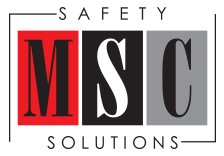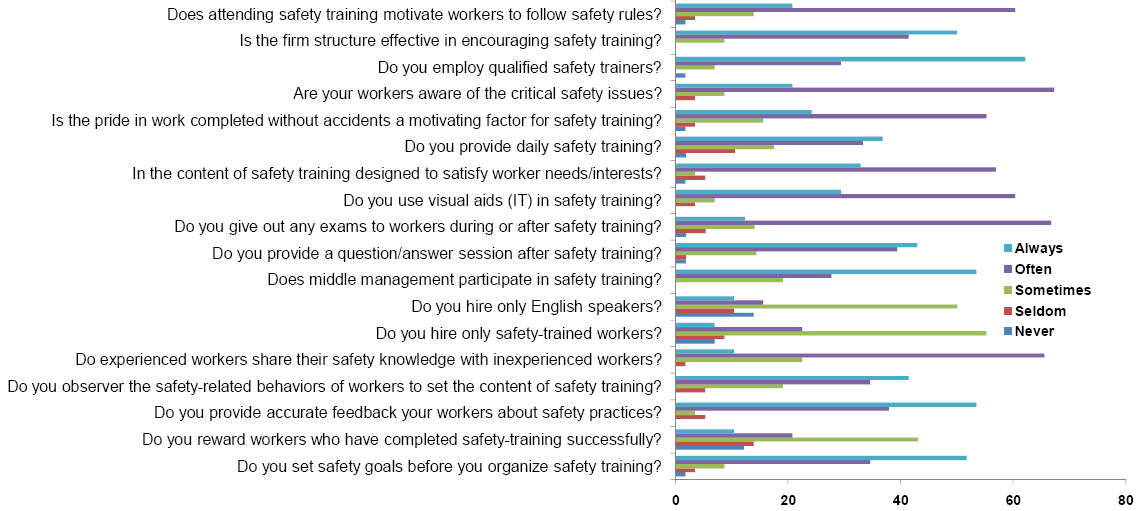Construction zones are full of health and safety hazards. Unfortunately, many construction workers are injured due to these issues every year. For this reason, organizations like OSHA have set strict standards for workplace safety to reduce the risk of injury or harm. OSHA inspects worksites from time to time to ensure that everything is up to code.
But it’s not enough to focus on passing inspections – although that is certainly important. To create a workplace that keeps workers safe, there needs to be an enforcement of safety training and protocol.
On-site construction safety training enforcement is not always easy. Moreover, merely offering training courses does not ensure that workers will follow safety guidelines. According to a survey The Challenges in Effective Construction Safety Training:
- Only 20% of construction companies believed their safety training system motivated workers to follow safety rules
- Only 35% believed that the content in their safety training was satisfactory
- 15% rewarded employees for completing training courses
Numbers like this are quite alarming. If construction team managers are not taking training seriously or enforcing requirements, it could be putting worker’s health and their lives in danger.
So, how can leaders ensure that they are properly enforcing on-site safety training standards to keep employees safe and worksites up to code? We’ve compiled a list of 4 tips to help:
1. Focus on the Most Common Violations First
The best way to get started is to focus on the most obvious and dangerous hazards on the job site. The most common causes of injury and death on construction sites are due to falls (33.5% of all fatalities), objects falling or hitting a person (11.1%), electrocution (8.5%), and other accidents involving equipment crushing or collapsing (5.5%).
The primary focus of your on-site safety training should revolve around eliminating or reducing these risks through proper structuring and protocol. This includes teaching:
- Proper scaffolding procedures
- Hazard communication
- Fall protection training
- PPE (personal protective equipment) use and requirements
- Control of hazardous energy (lockout/tagout systems for electricity)
Failing to implement proper safety requirements for these types of hazards are the most common OSHA violations cited for construction sites. By keeping these as the main focus – both during and after training – construction managers can create a far safer working environment.
2. Offer Continuous Training
It is pretty common for construction workers to undergo some sort of training when they are first hired, especially if they have limited experience. However, much of this information will be forgotten if it is taught during orientation or the first few weeks on the job.
Instead, it is better to provide continuous safety training courses that are focused on various topics throughout employment. These classes should be specialized based on the individual’s job requirements, such as crane safety operation, equipment operator training, or forklift operation. This can also help workers further their careers by improving their knowledge and learning new specialized skills that can be useful in the future.
If possible, offer teaching options that provide resources that can be used again and again. This will allow employees and leaders to refer back to the information if they have a question or simply need a refresher on a specific topic or protocol.
3. Make Training Interactive
People tend to zone out if they are just receiving lectures, particularly on subjects that are not of interest to them or if they feel they already know everything they need to accomplish the task at hand. How many of us have sat through an entire class and left not remembering a single word that the teacher said? While this may not be an issue in a typical classroom, it can be extremely dangerous when it comes to safety training.
Instead, utilize proactive safety training courses to get people involved with hands-on learning or interactive learning experiences. Some classes are implementing new technology so workers can safely “practice” on a digital program before operating machinery or tools in real life.
But interactive learning does not need to be technical and complex to be effective. It can be as simple as getting people involved through class discussions or Q&A sessions.
Remember, learning does not end when the class is completed. Interactive learning for workplace safety should extend beyond the classroom. Workers and managers who are more experienced should take the time to show others the proper protocol for safety requirements in real-life situations to make the information even more applicable (and memorable).
4. Create a Culture of Safety
Enforcement should not just be about correcting or punishing mistakes; it should also include positive reinforcement and rewarding good behavior. Leaders should practice ways to communicate better both in the way that they explain proper protocol, call out safety issues, and correct conduct.
Team leaders and managers should also be noticing when employees are applying what they’ve learned when it comes to their work. Encouragement is a key part of creating an effective safety program as positive reinforcement motivates workers to follow the rules and to make sure that others do, too.
Conclusion
Effective on-site safety training and enforcement lays a foundation for a safe, hazard-free work zone. But creating this type of environment takes careful planning and strategy for it to be successful.
MSC Safety Solutions proudly offers a variety of training courses that focus on all aspects of safety training, from general industry training to specialized certification and everything in-between.
We want to help you create a safe working environment for all of your employees through effective safety training. Reach out to our team today to learn more about the classes we offer.





